Introduction
Amazon Web Services (AWS) and Microsoft Azure are dominant players in the cloud computing industry, offering a wide range of services for application development, deployment, and management. This article provides a comparative analysis of AWS and Azure, highlighting their distinct features, pricing structures, and hybrid cloud capabilities. It explores case studies of organizations like IFCO and Chess.com, showcasing the value and benefits they have gained from leveraging the strengths of each platform.
The article emphasizes the importance of strategic technology decisions and the need for cloud solutions in today's digital transformation landscape. Additionally, it discusses the key differences between AWS and Azure, including their service categories, storage options, pricing models, and integration capabilities. The article also delves into the significance of security, compliance, machine learning, and AI capabilities offered by both platforms.
It concludes with insights on market share, certifications, and real-world applications, highlighting the continuous innovation and commitment of AWS and Azure in empowering businesses to thrive in the cloud era.
Overview of Windows Azure and AWS
Amazon Web Services (AWS) and Microsoft Azure hold commanding positions in the cloud computing industry, providing an array of services that facilitate the development, deployment, and management of applications and infrastructure within the cloud ecosystem. A comparative analysis of these platforms reveals distinct features, service portfolios, pricing structures, and hybrid cloud capabilities, which are critical in shaping the strategic technology decisions for organizations.
Azure, deeply integrated with Microsoft's software offerings, provides a seamless environment particularly for enterprises already reliant on Microsoft products. Customers like IFCO have highlighted Azure's trusted platform and the value of partnerships, such as those with Rackspace, which offer expertise and strategic guidance in cloud adoption. Azure's comprehensive suite of services includes Azure Active Directory (AD), equipping organizations with robust identity and access management controls, multi-factor authentication, and advanced governance features.
In contrast, AWS, with its extensive and mature offerings, is often the go-to choice for a broad spectrum of cloud services. The platform's ability to scale resources efficiently aligns with the dynamic needs of growing businesses, as underscored by the experience of Chess.com. The platform manages over ten million chess games daily, serving a vast global community, thanks to AWS's scalable infrastructure.
Recent announcements, like Microsoft Copilot Studio at Ignite 2023, underscore the innovative strides both AWS and Azure continue to make, further enhancing their capabilities and service ecosystems. Such developments are crucial as businesses navigate the challenges of digital transformation, rising cyber threats, and the need for agile, cost-effective solutions.
Evidently, the shift to cloud computing offers numerous advantages, including scalability, flexibility, and potential cost reductions. It's an evolution that has transformed the way businesses operate, making cloud services indispensable in contemporary IT strategies. Companies are rapidly adopting cloud architectures to remain efficient and quickly adapt to market changes, as indicated by increasing cloud service demands and the proliferation of advanced technologies like IoT and AI across industries.
When deciding between AWS and Azure, organizations must weigh each platform's offerings against their unique operational requirements and strategic objectives. With cloud security increasingly paramount, providers have evolved from basic defenses to sophisticated, multi-layered approaches to safeguard digital assets. This evolution is a testament to the industry's commitment to addressing the complex challenges online businesses face today.
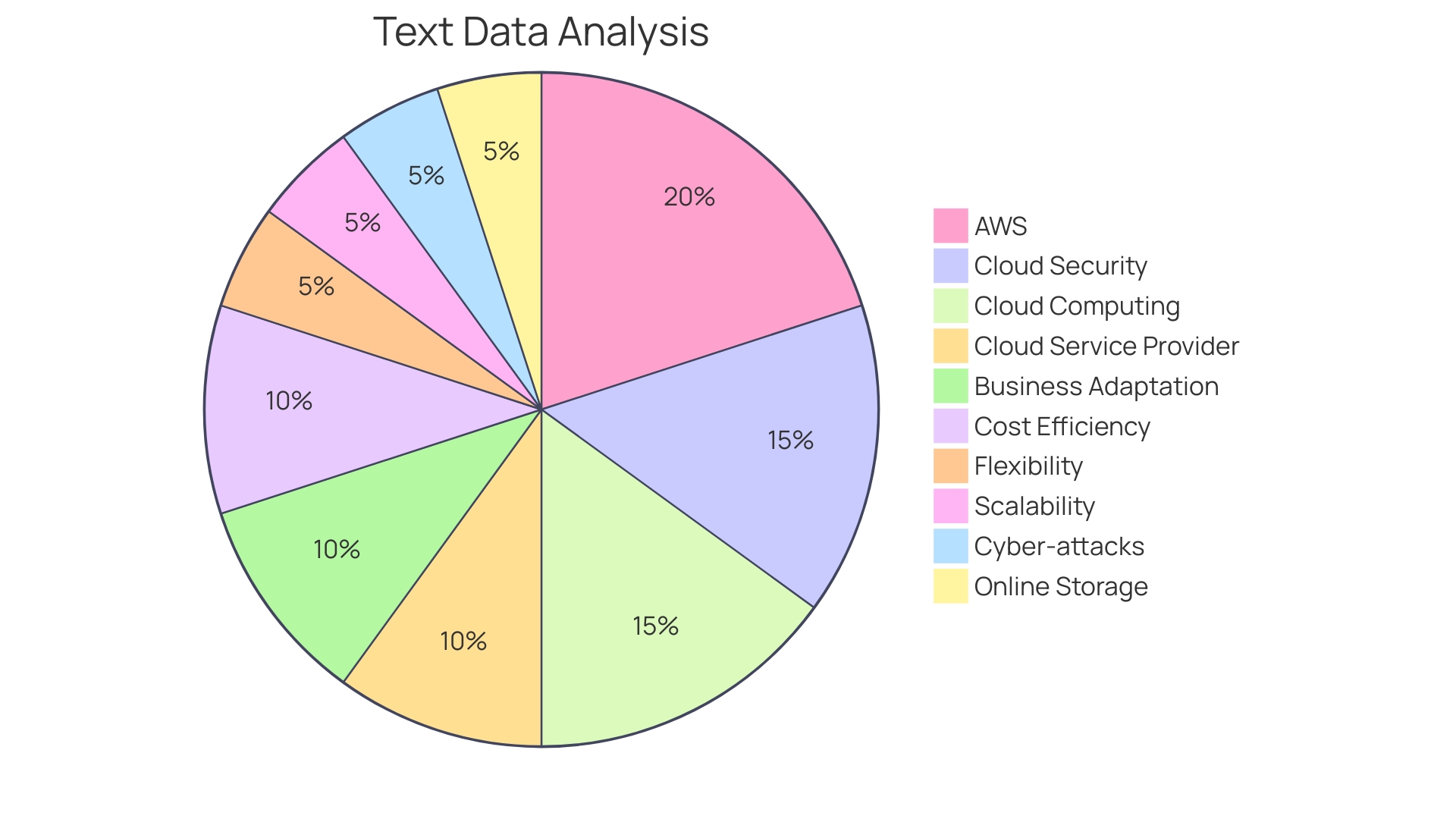
Key Differences Between Windows Azure and AWS
Comparing AWS and Azure's cloud capabilities, it's evident that each platform offers its unique strengths, particularly in terms of architecture, management tools, scalability, and global reach. Azure, for instance, is deeply integrated with other Microsoft services, making it a natural extension for organizations already embedded in the Microsoft ecosystem. A case in point is IFCO, which capitalized on the strong partnership with Rackspace to leverage Azure's potential.
Axel Bellermann, Head of Global Infrastructure and Cloud at IFCO, noted the importance of having a partner experienced in cloud deployments to assist their small IT team in the transition.
On the other hand, AWS's robust, scalable infrastructure has been pivotal for companies like Chess.com, which hosts over ten million chess games daily. James Kelty, Head of Infrastructure at Chess.com, highlighted the significance of AWS's scalable solutions in supporting their mission to serve the global chess community. The cloud platform's ability to easily scale and provide overflow resources through services like RackConnect Global has been instrumental in accommodating the site's massive user base.
The landscape of cloud services has evolved significantly, with security becoming a paramount concern in the selection of a cloud provider. Initially, security in cloud computing was not the primary focus, but the increase in cyber threats has led to sophisticated, layered security measures by providers. Both AWS and Azure have responded to these challenges by offering comprehensive security features and compliance certifications, ensuring that data is protected against potential breaches.
Furthermore, the strategic importance of cloud solutions is underscored by the growing demands of digital transformation. As industries rapidly adopt technologies like IoT, AI, and ML, the need for cloud architectures that can efficiently manage and adapt to market changes is crucial. This is evidenced by the significant market growth driven by the adoption of various cloud services, including IaaS, PaaS, and SaaS, particularly among SMEs.
In summary, when assessing AWS and Azure, it is essential to consider an organization's existing infrastructure, strategic partnerships, and specific business needs. Both platforms have demonstrated their ability to support businesses in achieving high availability, fault tolerance, and disaster recovery, all while maintaining stringent security protocols. This comparison not only informs the decision-making process for technology investments but also ensures alignment with an organization's overarching goals for innovation and growth.
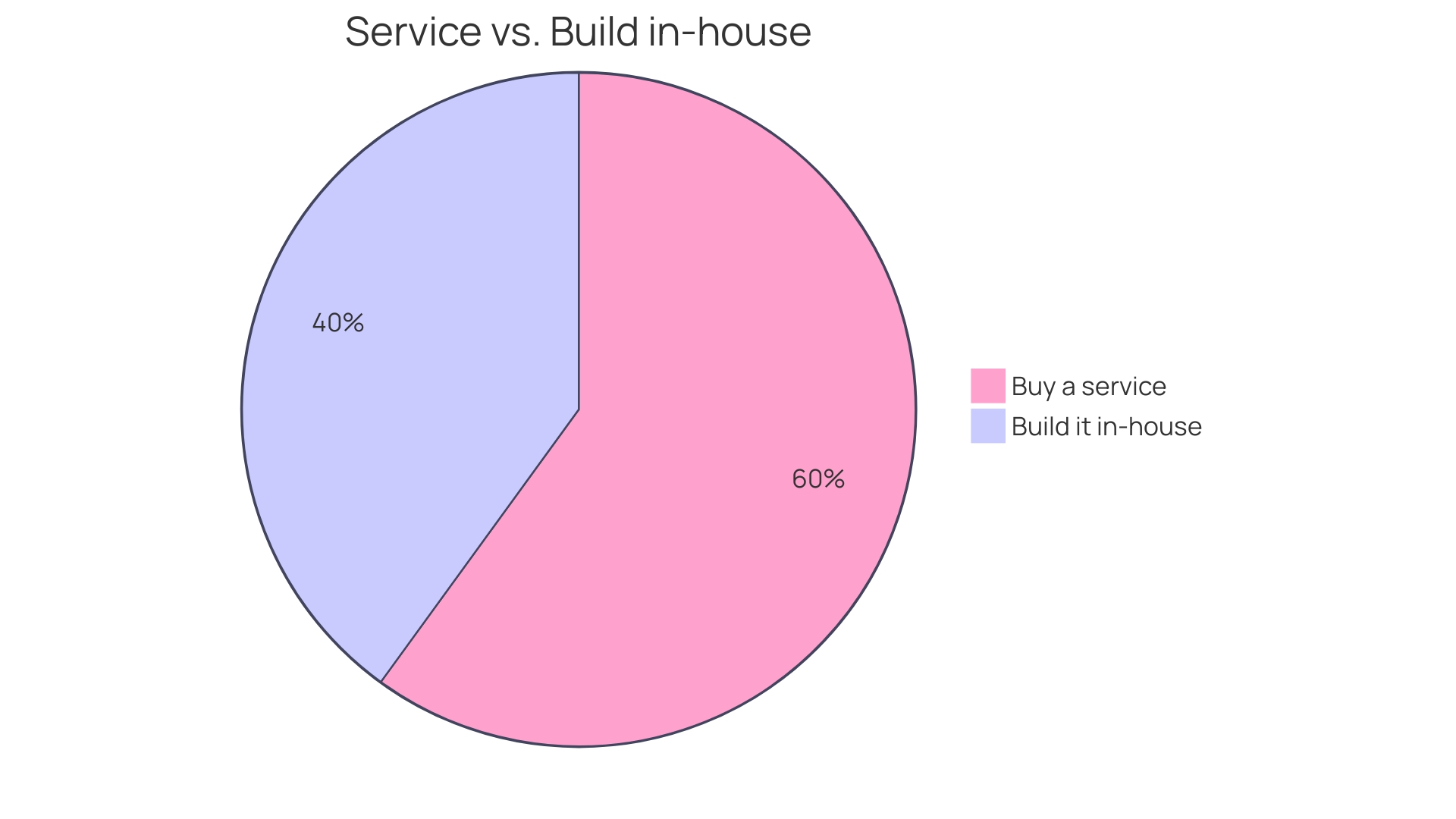
Service Categories and Offerings
AWS and Azure are at the forefront of providing robust cloud services, catering to a diverse range of categories such as computing power, storage solutions, networking capabilities, database management, security, analytics, and machine learning. Each platform offers unique features and integration options that are designed to meet the complex needs of modern enterprises, from managing user identities and access to protect against advanced threats, to integrating applications between on-premises and cloud environments, and simplifying the migration to the cloud.
For instance, Azure Active Directory (AD) serves as a cornerstone for secure identity and access management, with features like multi-factor authentication and comprehensive identity governance. Similarly, AWS offers IAM services that enable comparable security measures. Both platforms are committed to high availability, with multiple data centers spread globally to ensure data redundancy and recovery.
They also emphasize fault tolerance, by rerouting workloads to healthy servers in case of any application or infrastructure failures.
Recent developments at Microsoft Ignite 2023 showcased Microsoft Copilot Studio, a testament to the continual advancement in cloud services. This reflects the industry's drive towards AI transformation and the significance of a secure and reliable cloud infrastructure.
The cloud industry has seen rapid growth, driven by digital transformation across sectors, the rising penetration of internet and smart devices, and the strategic use of big data. As reported by Canalys, with the adoption of IoT, 5G, Machine Learning, and AI, organizations are increasingly turning to cloud architecture for efficient and agile operations. The fourth industrial revolution is further accelerating cloud adoption, as noted by the World Economic Forum, with cloud computing being integral to operating advanced technologies.
In summary, AWS and Azure offer a comprehensive suite of services that enable businesses to innovate, secure their operations, and scale with confidence. They present a world of possibilities for enterprises to seamlessly connect assets, gain insights, and drive informed decisions, fundamentally transforming the way businesses operate in the cloud era.
Compute Services
Cloud computing platforms hinge on robust compute services, which are essential for running applications, managing virtual machines (VMs), and dynamically scaling resources. When dissecting the compute services provided by AWS and Azure, it's crucial to consider virtual machines, serverless computing, and container services, focusing on their performance, scalability, and user-friendliness.
Azure has made significant strides in simplifying cloud integration and deployment, notably with the introduction of Microsoft Copilot Studio at Microsoft Ignite 2023. This innovation showcases a commitment to enhancing productivity through AI, underscoring Azure's user-centric approach to cloud services. Moreover, case studies, like that of IFCO Systems, highlight Azure's strengths in customer service and technical capabilities, which are particularly beneficial for organizations with limited IT resources seeking comprehensive cloud solutions.
In contrast, AWS has a longstanding history of providing robust cloud services, with a particular focus on diverse offerings and scalability. The infrastructure of AWS has been a dominant force in cloud computing, capturing a significant share of IT spending, which reflects its widespread adoption and the trust businesses place in its reliability and extensive service portfolio. Notably, insights from Canalys reinforce the importance of innovative technology and high-quality data in driving industry decisions, areas where AWS excels.
The evolution of cloud security, from its initial stages as an afterthought to its current state as a sophisticated, multi-layered strategy, remains a critical aspect of both AWS and Azure services. With increasing online threats, both providers have been compelled to enhance their security measures, ensuring that businesses can operate securely. In the realm of software deployment, the choice between VMs and containers is pivotal, with each serving distinct needs in application deployment and management.
VMs offer an isolated environment with dedicated OS instances, while containers provide a lightweight, efficient alternative for running applications across various computing environments.
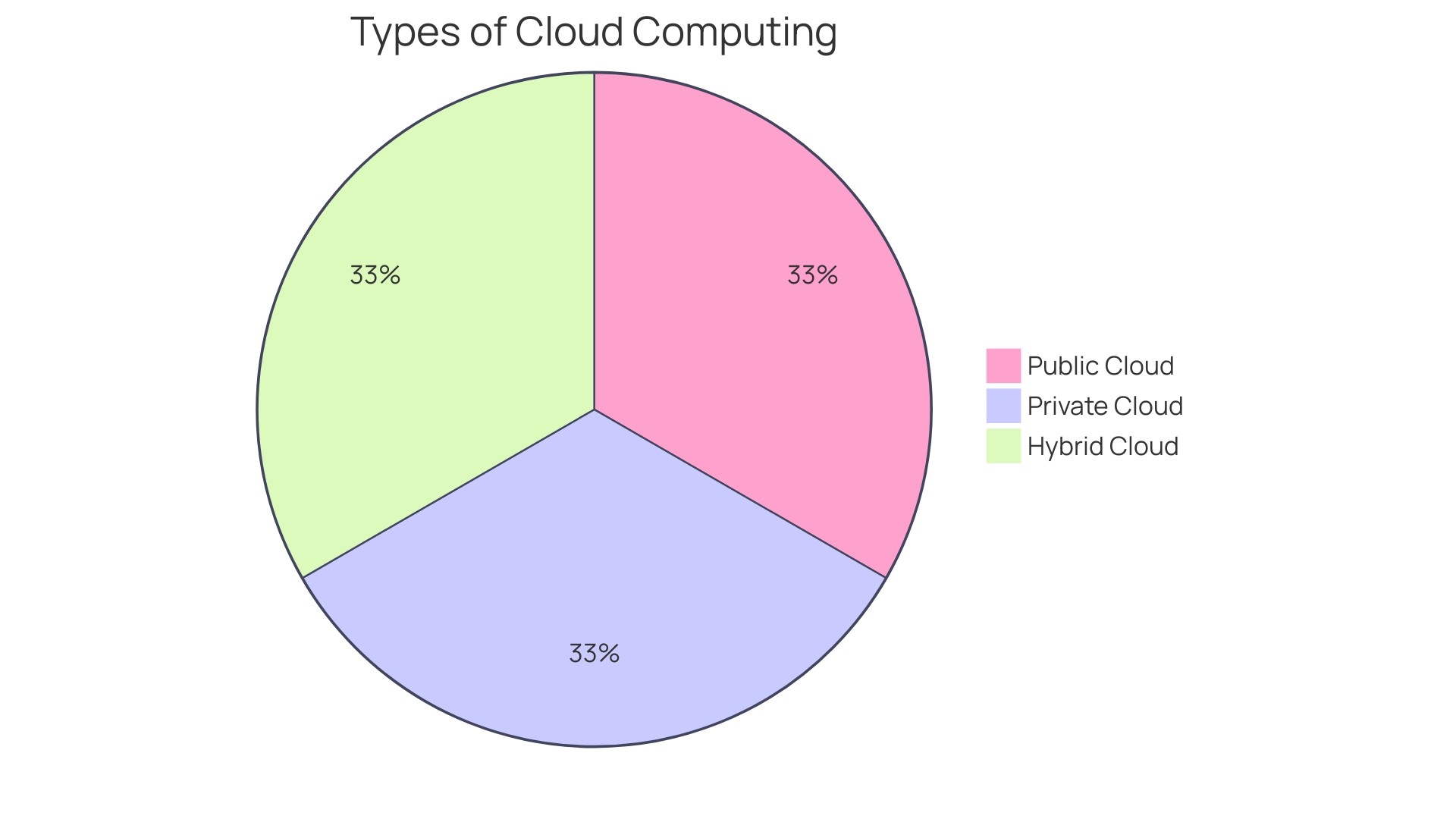
Storage Options
Cloud storage solutions have become a cornerstone for businesses in managing the ever-increasing volumes of data. AWS and Azure, two titans in the cloud services arena, offer a myriad of storage options tailored to meet diverse enterprise needs. Azure's commitment to customer-focused innovation is exemplified by partnerships, such as the one with Rackspace Technology, which provided IFCO with insights and expertise for a successful transition to Azure, emphasizing networking, subscriptions, and application modernization.
AWS, known for its robust and scalable storage services, continues to innovate, as seen with the recent advancements in CloudCasa for Velero, offering versatile backup solutions that cater to on-premises and cloud environments.
Both platforms provide object storage, block storage, and file storage solutions, each designed to address specific use cases and performance requirements. Object storage is ideal for unstructured data, offering high durability and easy scalability, while block storage shines in database storage scenarios due to its low-latency characteristics. File storage, on the other hand, is perfect for enterprise file sharing with its familiar hierarchical structure.
In terms of performance, both AWS and Azure have demonstrated a strong commitment to providing high-speed and reliable storage services. Azure's alignment with enterprise needs is highlighted by the expansion of Everspin's EMxxLX STT-MRAM products, offering full read and write bandwidth at impressive speeds, showcasing Azure's dedication to high-performance solutions. AWS, with its comprehensive suite of services, ensures that performance is scalable and can be tailored to the specific demands of a business.
Pricing models for AWS and Azure storage services are designed with flexibility in mind, allowing businesses to pay only for the resources they use. This cost-effectiveness is critical for enterprises looking to optimize their technology investments, as observed by Canalys, which emphasizes the importance of understanding the technology industry's future and adapting to new business models.
The landscape of cloud storage is continually redefined, as noted by CRN's 2024 Cloud 100 list, which includes companies like Arcserve that are pushing the boundaries of data management and protection. As businesses navigate the complexities of data storage, the choice between AWS and Azure often comes down to specific organizational needs and strategic partnerships that can leverage the unique strengths of each platform.
Pricing Models and Cost Management
When evaluating cloud computing platforms, understanding the pricing model is essential for budget-conscious organizations. AWS and Azure offer a variety of pricing options, including on-demand, reserved, and spot instances. Analyzing the cost structure involves more than just comparing prices; it's about gaining insight into how these costs align with your specific usage patterns and architectural needs.
Nearly half of professionals surveyed believe their cloud expenses exceed necessary amounts, with a mere 30% possessing a precise knowledge of their spending distribution. This indicates a significant disconnect between expected and actual cloud costs, underscoring the importance of cost visibility and management.
To address cost concerns effectively, one can leverage tools like cost dashboards, which provide a granular view of expenses for individual components within your cloud architecture. This enables a proactive approach to cost management and can reveal cost patterns such as the 'shark's fin,' a trend observed when deploying new services, where costs initially spike.
Case studies, like that of Sirius Technologies, highlight the practical benefits of these approaches. Sirius harnessed Strong Network's platform to manage Cloud Development Environments, leading to improved productivity and cost savings, while also enhancing their client services in the financial sector.
Quotes from industry experts emphasize the necessity of conceptualizing your system's architecture to understand the varying cost profiles. A strategic view on costs, considering both short-term and long-term perspectives, can result in significant organizational savings and operational efficiency.
In light of the current focus on AI and its implications for IT operations, as discussed at Data Center World 2023, it's clear that innovative technologies can play a role in cost management. However, it is crucial to evaluate whether these investments align with your organization's specific needs and cost-saving goals.
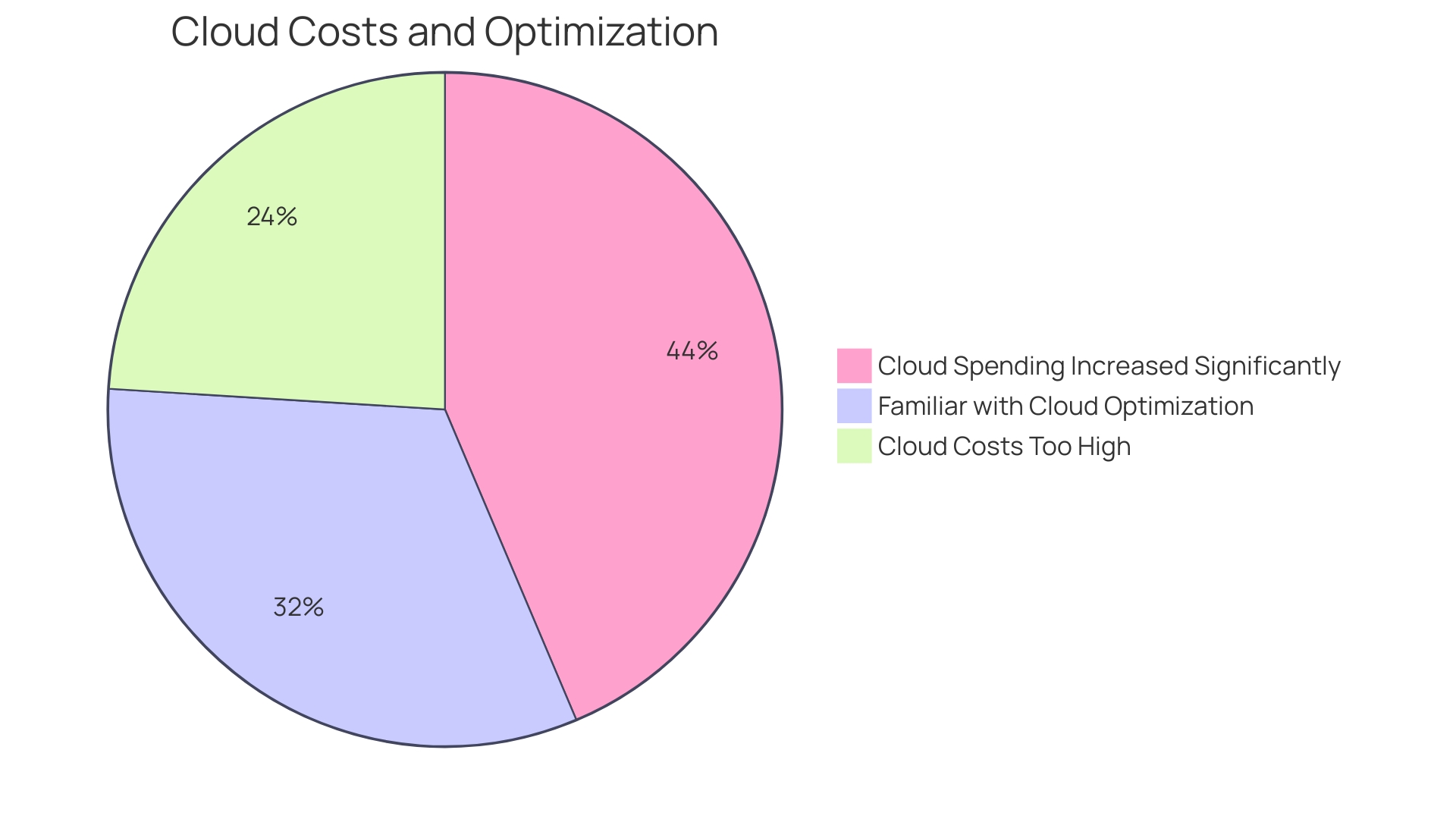
Hybrid Cloud Support
Hybrid cloud solutions have become essential for businesses seeking agility and efficiency in their IT operations. They offer a blend of on-premises infrastructure with public cloud services, providing a versatile environment that can respond to the dynamic needs of modern organizations. The focus here is to delve into the specifics of hybrid cloud offerings from AWS and Azure, including their capabilities in creating secure VPNs, establishing dedicated connections, and offering robust management tools for a seamless hybrid experience.
The recent global shift to remote work has underscored the value of flexible IT environments. Many companies rapidly adopted cloud-based virtual desktop infrastructures (VDIs) to enable their workforce to operate from anywhere. This move to the cloud has now cemented into a long-term strategy, with a recent survey indicating that over two-thirds of full-time employees favor the option to work from home.
In response, companies are increasingly supporting a hybrid workplace model. AWS and Azure have been at the forefront of this transition, providing the necessary infrastructure and services to support a distributed workforce.
A hybrid cloud is not just a technological choice; it's a strategic business decision. It involves integrating on-premises systems with cloud services to create a cohesive and efficient IT ecosystem. Organizations are now demanding robust governance, security, and privacy policies that extend across all IT systems, regardless of their location.
Cloud providers like AWS and Azure manage network, computing, and storage resources with the same diligence as internal teams manage on-premises systems.
The hybrid cloud model has evolved to accommodate various infrastructures and services, both on-premises and in the cloud, that are interconnected and exchange data. This integrated approach allows businesses to leverage the strengths of both environments—security and control from on-premises solutions, and scalability and innovation from cloud services.
As businesses navigate the complexities of digital transformation, the need for a strong data foundation becomes imperative. The latest advancements in cloud technology, AI, and data platforms are enabling organizations to build robust data frameworks more swiftly and effectively. However, challenges persist in maintaining data quality, ensuring agility, and managing costs.
A McKinsey Digital statement highlights the necessity for businesses and IT to reevaluate their cloud operating model to overcome legacy processes and technologies.
The current landscape indicates a trend towards hybrid and multi-cloud strategies, with a majority of organizations (78%) favoring this approach. The adoption of these strategies has reached a plateau, reflecting a market that has matured and recognized the benefits of cloud computing.
In conclusion, as businesses continue to innovate and adapt to market changes and technological advancements, the support and capabilities offered by cloud providers like AWS and Azure in hybrid cloud environments will play a pivotal role in enabling these transformations.
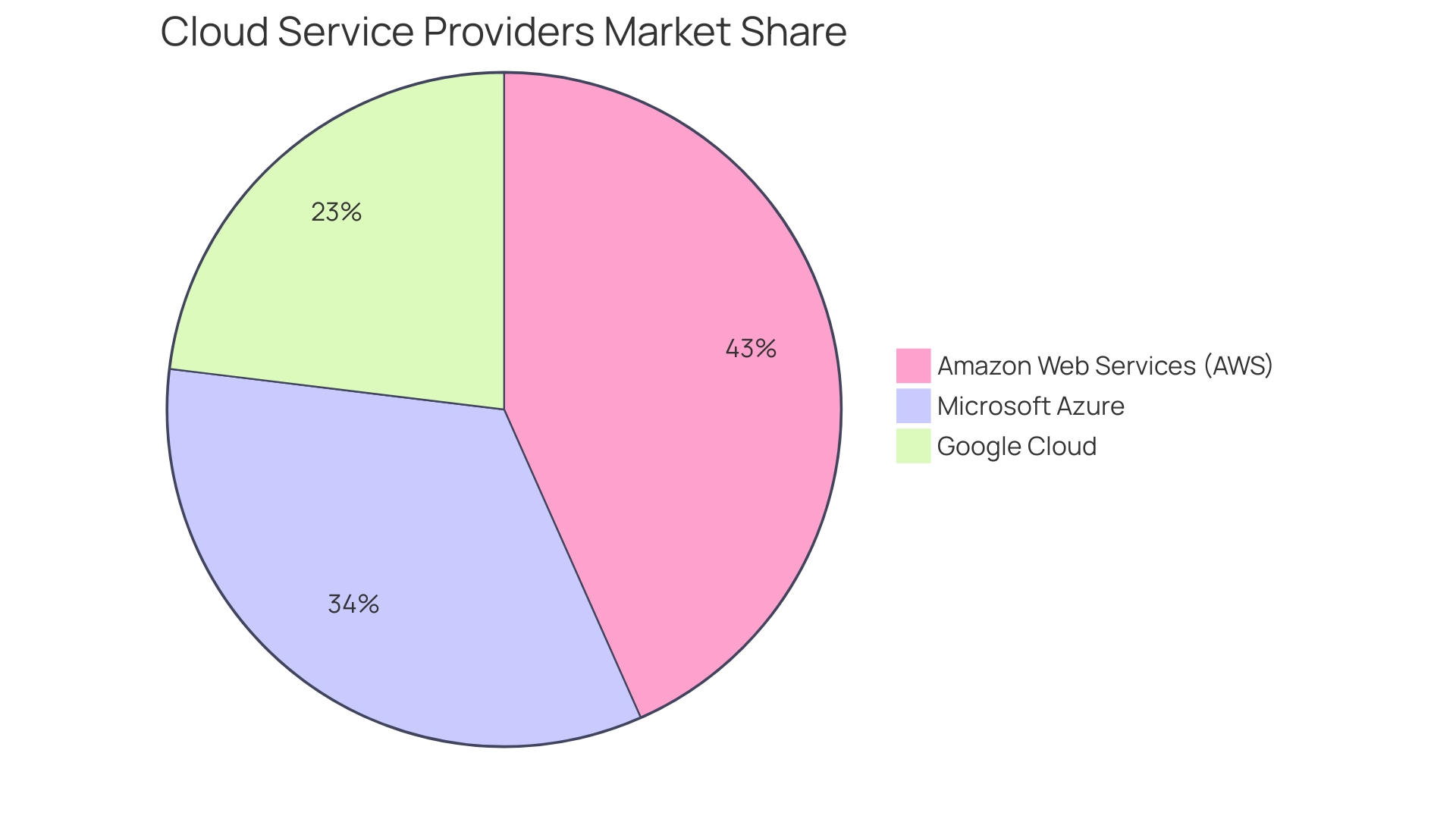
Security and Compliance
The cloud computing ecosystem is continuously evolving, with security being a critical component. AWS and Azure, two of the leading cloud service providers, have both developed comprehensive security features to ensure customer data and applications are well-protected. A focus on robust identity and access management systems, advanced encryption methods, vigilant monitoring practices, and adherence to compliance certifications is central to both platforms' security strategies.
AWS's proactive stance on security became particularly evident when it promptly alerted a client about a suspicious support case involving a request to increase Simple Email Service (SES) limits, despite the client not using SES, a common target for phishing and spam campaigns. This incident underscores AWS's commitment to monitoring and swiftly responding to potential threats.
Azure has also demonstrated a strong security posture by integrating automation and AI in its software development lifecycle. This move, aimed at enhancing cloud service security, reducing vulnerability resolution time, and ensuring robust encryption key protection, signifies Azure's dedication to improving its security measures and addressing critical cybersecurity challenges head-on.
In the context of real-world applications, companies like Sirius Technologies have leveraged secure cloud development environments to manage financial services software lifecycle, and platforms like Chess.com rely on cloud infrastructure to serve millions of users. These cases illustrate the importance of choosing a cloud provider that not only offers cost-efficiency and agility but also prioritizes security to manage the ever-present risks of breaches.
With the landscape of online businesses facing a whirlwind of competitive and customer demand changes, the cloud has become a transformative force. It's crucial for organizations to consider not just the financial advantages of cloud providers' 'pay-as-you-go' models but also the security assurances that come with outsourcing data safety to experienced CSPs. Cybersecurity has indeed come a long way from its inception, adapting to new threats and technological advancements to safeguard valuable digital assets in our increasingly cloud-centric world.
Machine Learning and AI Capabilities
The landscape of machine learning and artificial intelligence (AI) is rapidly advancing, reshaping industries by elevating business capabilities to new heights. Both AWS and Azure have stepped up to the plate, offering a suite of robust services designed to empower organizations in crafting intelligent applications that are not only reactive but predictive in nature.
Azure has demonstrated its commitment to innovation by integrating Generative AI into its offerings, propelling developers into the next wave of computing. An illustrative case in point is a chat application that has evolved from a simple conversational interface to a sophisticated platform featuring real-time data access and multilingual voice support. This evolution is indicative of Azure's forward-thinking approach and its focus on equipping developers with tools to stay abreast of technological advancements.
Furthermore, Azure's dedication to security is evident with an investment of over $1 billion annually in cybersecurity R&D and a team of more than 3,500 security experts safeguarding data privacy. Organizations can initiate their AI journey with Azure confidently, with the added financial incentive of a $200 credit and access to a plethora of popular services at no additional cost during the initial period, followed by a pay-as-you-go model that ensures cost efficiency.
AWS is not far behind, enticing businesses with an equally impressive array of AI services. The platform's AI capabilities are continuously updated, with a strong emphasis on practical implementation. AWS simplifies the evaluation of AI applications with its AI Studio, ensuring models are not only accurate but also scalable and compliant before deployment.
This aligns with the current trend where businesses are transitioning from experimenting with AI to deploying solutions at scale.
In the midst of this AI renaissance, it is crucial for developers to understand the underlying hardware that AI systems are built upon and the importance of a comprehensive data estate that can fuel reasoning engines. Microsoft has been proactive in this regard, initiating an ethical AI audit function in 2016 and establishing engineering principles to navigate the complex landscape of AI safety and misinformation.
As organizations embrace AI, the importance of a solid data strategy becomes paramount. AI is only as good as the data it is built on, and a cohesive strategy for connecting and leveraging data sets is fundamental to training effective AI models. The call to action for businesses is clear: embrace AI with a focus on data, secure your digital environment, and choose a cloud provider that aligns with your technological vision, whether it's AWS's wide-ranging AI services or Azure's generative AI and robust security measures.
Integration with Existing Systems
Understanding the integration capabilities of cloud platforms is essential for organizations looking to migrate their infrastructure smoothly. Both AWS and Azure offer a suite of integration options through APIs, SDKs, and connectors, which are pivotal in syncing with enterprise systems, databases, and development environments.
Azure's recent unveiling of Microsoft Copilot Studio at Ignite 2023 is a testament to its commitment to seamless integration. This low-code tool enables customization within Microsoft 365 and the creation of standalone copilots, facilitating a unified experience across different work surfaces. Such innovations demonstrate Azure's approach to integration, focusing on user-friendly, accessible tools that empower organizations to harness the full potential of the cloud.
Meanwhile, AWS maintains its stronghold with robust APIs that are central to the operation of countless applications worldwide. The ubiquity of AWS APIs is a clear indicator of their reliability and the trust they have garnered in the tech community. They enhance the AWS ecosystem's ability to interact with a multitude of software components, streamlining the migration of diverse workloads to the cloud.
Both platforms understand the importance of events and messages in cloud integration. Events act as lightweight notifications that signal state changes without imposing on how they are handled, allowing for flexible responses by the consumer. This is in contrast to messages, which carry data and come with expectations regarding their consumption.
The distinction between these two forms of communication is crucial in designing integration strategies that are both effective and adaptable to an organization's unique workflow.
Case studies from organizations like IFCO, which leveraged Rackspace's expertise for their cloud migration, highlight the practical advantages of partnering with experienced vendors. Such collaborations can bring clarity to security concerns, ensure compatibility with legacy systems, and provide valuable insights into alternative migration approaches.
In conclusion, the choice between Azure and AWS for integration will largely depend on specific business requirements, existing infrastructure, and the strategic partnerships an organization can harness. Both platforms offer comprehensive tools and services that cater to a wide range of integration needs, ensuring that businesses can migrate with confidence and continue to innovate on the cloud.
Market Share and User Base
AWS and Azure are the titans of cloud computing, each catering to a diverse clientele with distinct requirements and preferences. Azure's integration with Microsoft's software and the familiarity of its environment appeals particularly to existing Microsoft customers, as highlighted by Heikkila's trust in the platform. Rackspace Technology's collaboration during IFCO's Azure adoption underscores the importance of skilled partnership and customer-centric service in cloud transformations.
The cloud market itself is burgeoning, driven by a global digital shift, IoT, AI, and ML innovations, as reported by Canalys and endorsed by the World Economic Forum. This rapid market expansion is evidenced by the growing reliance on SaaS, PaaS, and IaaS solutions, especially among SMEs, indicating a strong preference for cloud services that offer agility and efficiency in a rapidly changing business landscape. The extensive adoption of cloud computing across various industries, including retail, BFSI, and manufacturing, is a testament to the strategic governmental support that further fuels the sector's growth.
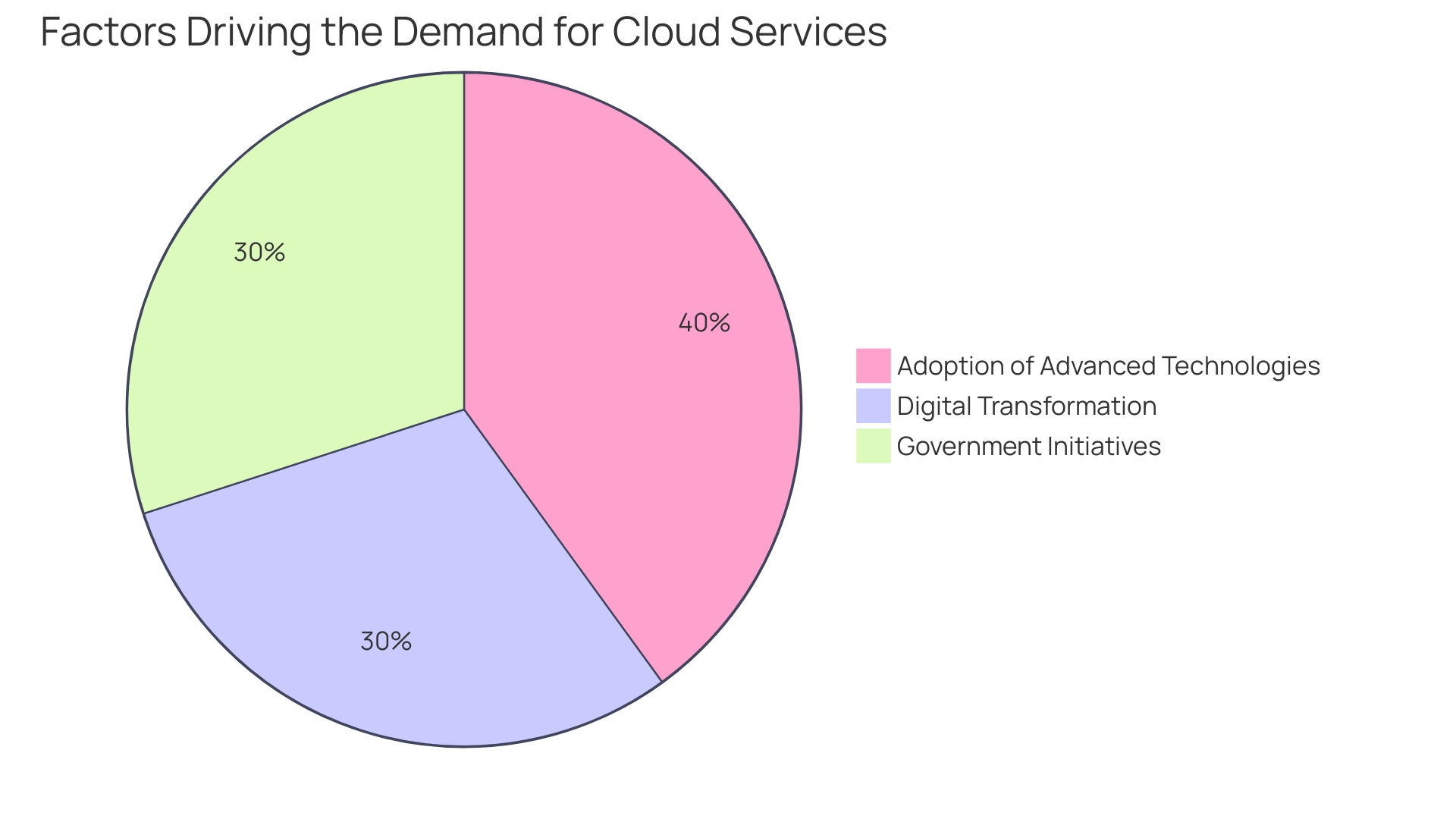
Certifications and Learning Resources
Upskilling is imperative in the dynamic domain of cloud computing, and certifications are a vital tool in validating IT expertise. AWS and Azure each offer a robust certification program complemented by rich learning resources. Azure's Exam AZ-204: Developing Solutions for Microsoft Azure is illustrative of the structured learning paths provided.
The exam's study guide is meticulously curated, encompassing a summary of potential topics, and furnishes links to additional resources, thereby streamlining the preparation process. Post January 22, 2024, the skills measured by this certification have been updated, reflecting the evolving technological landscape.
AWS certifications are similarly comprehensive, with a survey indicating that in the U.S., more than 1,900 professionals contributed to the crafting of a certification list, highlighting the prestige of cloud computing and cybersecurity certifications. These credentials not only signify proficiency but are also correlated with higher earning potential, as the demand for these specialized skills remains robust.
Furthermore, Microsoft's events like the Tech Brief: Unlock Value from Your Data with Analytics underscore the importance of continuous learning. These foundational courses are designed to impart knowledge on integrating various data sources into a unified data lake, offering insights on analytics tools and secure, scalable solutions.
Expert quotes emphasize that cloud certifications are more than just accolades; they are a testament to one's commitment to the field, enhancing one's stature as a valuable tech industry asset. Industry-recognized certifications, such as those from AWS and Azure, require significant effort and studying, underscoring their value and distinguishing them from less rigorous credentials.
In summary, both AWS and Azure are dedicated to fostering a skilled workforce through their detailed certification programs and educational resources, ensuring that IT professionals are equipped to meet the demands of the ever-changing technology sector.
Case Studies and Real-World Applications
Exploring the practical applications of cloud platforms like AWS and Azure reveals how organizations are harnessing their capabilities to foster innovation and enhance operational efficiency. One such instance involves the integration of generative AI into a chat application, exhibiting the evolution of AI up to November 2023. This application, rooted in a React framework, showcases the incorporation of advanced features such as multi-language voice support, demonstrating the seamless fusion of Azure's services with existing technologies to address complex business needs.
Moreover, companies like IFCO have capitalized on Azure's ecosystem, working with partners like Rackspace to navigate their cloud journeys and optimize their IT operations despite limited in-house resources. This collaboration underscores the importance of Azure's customer-centric approach and its ability to offer valuable insights and alternative strategies to traditional plans.
In the realm of online gaming, Chess.com exemplifies the strengths of cloud computing, managing over ten million daily chess games and supporting a community of 150 million users. Embracing cloud solutions has allowed Chess.com to scale its infrastructure and connect global audiences, thus enhancing the digital chess experience and reinforcing the platform's commitment to the game's growth.
The transformative impact of cloud platforms is further highlighted by Microsoft's announcement at Ignite 2023 of Copilot Studio, a tool designed to revolutionize productivity by leveraging natural language processing across Microsoft 365. Similarly, Azure's interconnected network and robust app development capabilities are pivotal for businesses seeking to modernize and create intelligent applications, as evidenced by Forrester's report on the economic impact of Azure App Innovation.
The retail industry, too, has seen a marked improvement from intelligent cloud applications, with CarMax employing Azure OpenAI Service to automate the creation of car research pages, thus improving customer insights and website search rankings. This AI-driven method has greatly expedited content generation, showcasing the efficiency and strategic advantage offered by Azure's AI services.
Conclusion
AWS and Microsoft Azure are dominant players in the cloud computing industry, offering a wide range of services for application development, deployment, and management. This article has provided a comparative analysis of AWS and Azure, highlighting their distinct features, pricing structures, and hybrid cloud capabilities. It has explored case studies of organizations like IFCO and Chess.com, showcasing the value and benefits they have gained from leveraging the strengths of each platform.
The importance of strategic technology decisions and the need for cloud solutions in today's digital transformation landscape has been emphasized. The article has discussed key differences between AWS and Azure, including their service categories, storage options, pricing models, and integration capabilities. It has also delved into the significance of security, compliance, machine learning, and AI capabilities offered by both platforms.
In conclusion, AWS and Azure are committed to continuous innovation and empowering businesses to thrive in the cloud era. They offer comprehensive suites of services that enable businesses to innovate, secure their operations, and scale with confidence. The choice between AWS and Azure depends on an organization's existing infrastructure, strategic partnerships, and specific business needs.
Both platforms have demonstrated their ability to support businesses in achieving high availability, fault tolerance, and disaster recovery, all while maintaining stringent security protocols. By leveraging the strengths of AWS and Azure, organizations can make strategic technology decisions that align with their overarching goals for innovation and growth.




